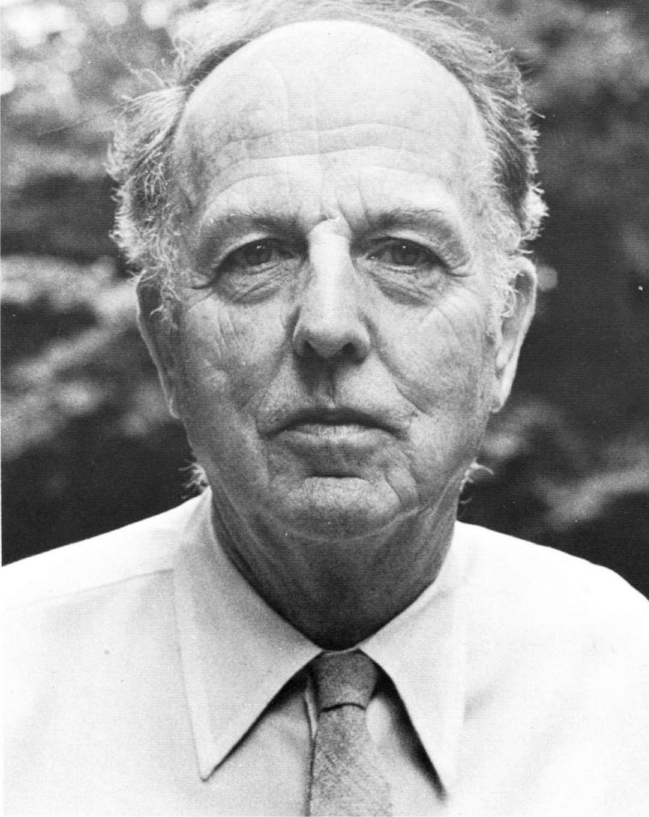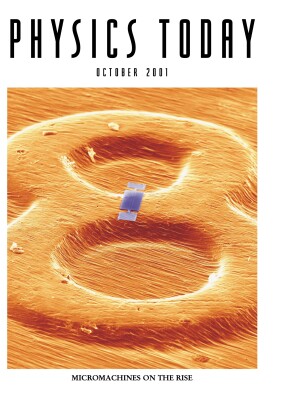Wilfrid Basil Mann
DOI: 10.1063/1.1420572
Wilfrid Basil Mann, a preeminent radionuclide metrologist who served his native Britain and the US, died of cardiac arrest on 29 March 2001 in Towson, Maryland.
Mann was born on 4 August 1908 in the London suburb of Ealing. In 1930, he received a bachelor’s degree in math and physics from Imperial College, London. He then did graduate work in Copenhagen and in Berkeley, California.
In Copenhagen, he worked on gas phase thermodynamics with Martin Knudsen, but Niels Bohr extended to Mann an open invitation to attend seminars and functions at his Institute for Theoretical Physics of the University of Copenhagen (now the Niels Bohr Institute). Bohr also referred him to a boarding house for students, where Werner Heisenberg was residing at the time. At Mann’s birthday party in 1933, Heisenberg played a bit of a Beethoven piano concerto that he was rehearsing for a performance in Berlin.
At Berkeley, Mann worked with Ernest Lawrence on the cyclotron in the radiation laboratory. Mann’s work with accelerated helium atoms on copper and zinc targets led to the discovery of the radioisotope gallium-67, which is much used today in nuclear medicine. In 1934, Mann completed his doctorate in physics under G. P. Thompson at the University of London; his thesis was on the exchange of energy of gas molecules with solid surfaces.
In 1938, Mann took a position as lecturer in the third-year physics laboratory at Imperial College and began work with Thompson to build a Van de Graaff accelerator. At the outbreak of World War II, Thompson was in charge of the “tube alloys” project, the British nuclear program later incorporated into the Manhattan Project. He had Mann assigned as the physicist to the British Central Scientific Office at the British Embassy in Washington, DC. At the embassy, Mann’s interactions with his coworkers Kim Philby and Guy Burgess gained him considerable notoriety when Philby and Burgess were implicated in the biggest spy scandal of midcentury. Stories about his possible involvement in the spy ring were to surface periodically for the next 50 years. In memoirs written much later, Mann made a strong case that he was not involved in their nefarious activities, but he relished the stories of intrigue from these exciting days. He even suggested that his old coworker Philby, by then a colonel in the KGB, was the source of rumors of a fifth spy with the code name “Basil.”
In 1946, Mann wrote to John Cockcroft, the director of the National Research Council of Canada’s Chalk River Laboratory, with an aim to continuing work with cyclotrons. Cockcroft said that he had a position for a physicist to make accurate measurements of radioactivity. At that time, Mann began careful measurements to compare the national radium standards of the UK, Canada, and the US. From 1946 to 1951, Mann was the UK delegate to the United Nations Atomic Energy Commission.
In 1951, Lauriston Taylor recruited Mann to head the radioactivity section at the National Bureau of Standards (NBS) in Washington, DC. Mann became a US citizen in 1959. His friends and acquaintances in Washington during the 1950s were an eclectic group of diplomats, ranging from Henry Tizard and James Jesus Angleton to various representatives of the British and Soviet embassies. His NBS colleagues included Ugo Fano (whose obituary appeared in September 2001, page 73
For 40 years, Mann was one of the most influential researchers in his field. At NBS, he developed a full suite of experimental techniques for standardization of nuclides, including coincidence counting, internal gas counting, and microcalorimetry. He made early, definitive measurements of the half-lives of tritium and carbon-14, and built an isotope separator to prepare isotopically pure standards of krypton-85 and xenon-133. At intervals of a few years over this period of four decades, Mann prepared books, handbooks, and extended monographs to completely describe the current state of the art in radionuclide metrology.
Perhaps Mann’s most lasting contribution was the monumental A Handbook of Radioactivity Measurements Procedures (National Council on Radiation Protection, 1978). In the latter stages of his full and active career, he was the editor of Applied Radiation and Isotopes and the president of the International Committee for Radionuclide Metrology.
His quick humor, love of life, and uncompromising attention to careful measurements and clear exposition brought joy to his friends and colleagues, as well as trepidation and gratitude from his staff and the hundreds of authors whose manuscripts fell under his pen! His legacy is the generation of scientists whom he mentored and the accuracy with which radioactivity measurements are made around the world.


More about the Authors
Bert M. Coursey. NIST, Gaithersburg, Maryland, US .
William L. McLaughlin. NIST, Gaithersburg, Maryland, US .




